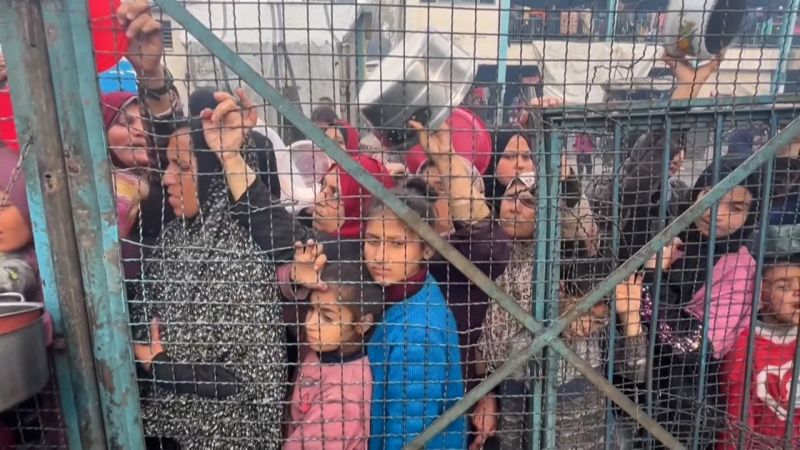One Year of War in Gaza: CNN Looks at Impact of Ongoing Fighting
Israel’s bombing campaign in Gaza has created over 42 million tons of debris, 14 times more than the combined total from all previous conflicts. The war has left more than 2.2 million people at risk of full-scale famine, with at least 38 children having starved to death and 3,500 children at risk of death due to malnutrition.
The Israeli campaign has paralyzed the medical system in Gaza, with at least 19 out of 36 hospitals not functioning. Over 986 medical workers have been killed, and 85% of school buildings have been destroyed or damaged. The Palestinian Ministry of Education reported that Israeli attacks have killed 11,600 students, more than 750 teachers and school staff, and 130 scholars and academics.
Humanitarian agencies are struggling to provide aid due to Israeli sanctions, lengthy truck inspections, damaged roads, and strikes on aid convoys. The closure of the Rafah crossing by Israeli forces has reduced the entry of aid into Gaza, despite Israel reporting that at least 52,955 trucks carrying over 1 million tons of aid have entered the enclave since the fighting erupted.
The UN has accused Israel of creating a “man-made” catastrophe in Gaza, with at least 46% of coordinated humanitarian movements being denied or impeded by Israel. The situation in Gaza is described as apocalyptic, with areas that were once busy with people now turned into rubble and sewage lakes.
Hezbollah has intensified its military actions against Israel in Lebanon, executing covert operations and launching a relentless bombing campaign. The ongoing conflict has placed significant strain on the Israeli Defense Forces (IDF), leading to personnel shortages and economic downturns. The Israeli economy has contracted by 4.1% in the initial months of the war, and military spending has increased dramatically, potentially leading to a significant increase in regular military expenditures.
Israel’s anticipated ground offensive in Lebanon is set to underscore a new strategic reality where the once-dominant United States is unable to control its ally or sway other significant participants in the rapidly escalating regional crisis. The U.S. has consistently advocated for a ceasefire in Gaza but has been disregarded by Israeli Prime Minister Benjamin Netanyahu, who frequently acts decisively without consulting the U.S..
The conflict has resulted in a dire humanitarian crisis, with over 40,000 Palestinians killed since the fighting began. Hospitals in Gaza continue to struggle with overwhelming casualties and a lack of resources. The situation in Lebanon is also dire, with 90,000 Lebanese civilians having fled their homes to avoid Israeli airstrikes.
Hamas is militarily weakened but far from eliminated, with Israeli claims of killing around 17,000 gunmen and dismantling most of its 24 battalions. However, detailed reports account for approximately 8,500 fatalities, and Hamas’ tunnel network remains functional, enabling hit-and-run operations.



